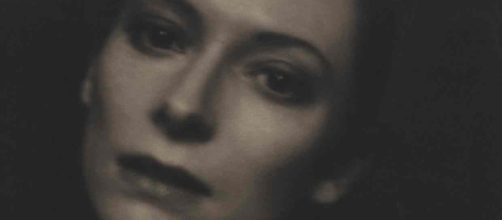Here’s a question for the ages. Why do so many painters render their work so crisply that it can pass for a good quality color slide? Another part of that question: why do photographers blur their imagery as though it were brushed on? Consider first painters, those super-realists, who want their canvases to mirror four-color separations. They even do their work upside down so the subject doesn’t get in the way of their copying. Such a style allows little room to maneuver when the art of painting can be such a free-for-all.
In black and white
The question goes begging because each art form – whether painting or photography – holds a special advantage over the other.
Cameras can freeze-frame an action in real-time, which makes it a great reporting tool. And painting, the kind that doesn’t try to be what it’s not, can do what it pleases, including going the way of the Romanticists of the 19th century, who rebelled against exactness, against technology to stress emotion and the human condition. Now consider photography, the kind that seems to take after the Romantic school of painting. The National Portrait Gallery’s recent acquisition – Black And White likenesses of celebrities from the ‘80s and ‘90s by Andrew and Stuart Douglas, includes one of Tilda Swinton so fuzzy-edged that her distinctive features look melted, as if the whole picture were in tears. When these brothers’ works went on exhibition 1995 at the Photographer’s Gallery, director Phillip Prodger characterized the photos as “painterly,” as if that were a good thing.
”
Shades of gray
This soft-focus portrait of Swinton calls to mind the art of Edward Steichen’s painterly photo-portraits of his wife Georgia O’Keeffe. He even shot a picture of himself early in his career that he hoped would be viewed as photography’s answer to Titian’s painting “Man with a Glove.” What you see is a blurry-edged likeness of Steichen posed with brush and palette instead of a glove. And the point is...? Not that this is all that surprising given his study of painting in Europe and the slew of his canvases in galleries and museums. It’s notable that when he turned exclusively to photography, he shot crisp, clear and detailed pictures, particularly for Vogue and Vanity Fair.
Staying true to form
One may wonder if Steichen lived to see the advent of super-realism, if he’d have reverted to type and taken up the brush again. As for his painterly photographs, at least he had an excuse. What was the reason for Andrew and Stuart picturing Swinton in such a way that it conjures up a Romantic school painting? It’s too bad that so many camera artists pattern themselves after painters when there’s so much their own medium can do that a loaded brush can’t. By the way, none of this is to suggest that photography isn’t an art in its own right. This is only to raise the question, why have it double for painting?

